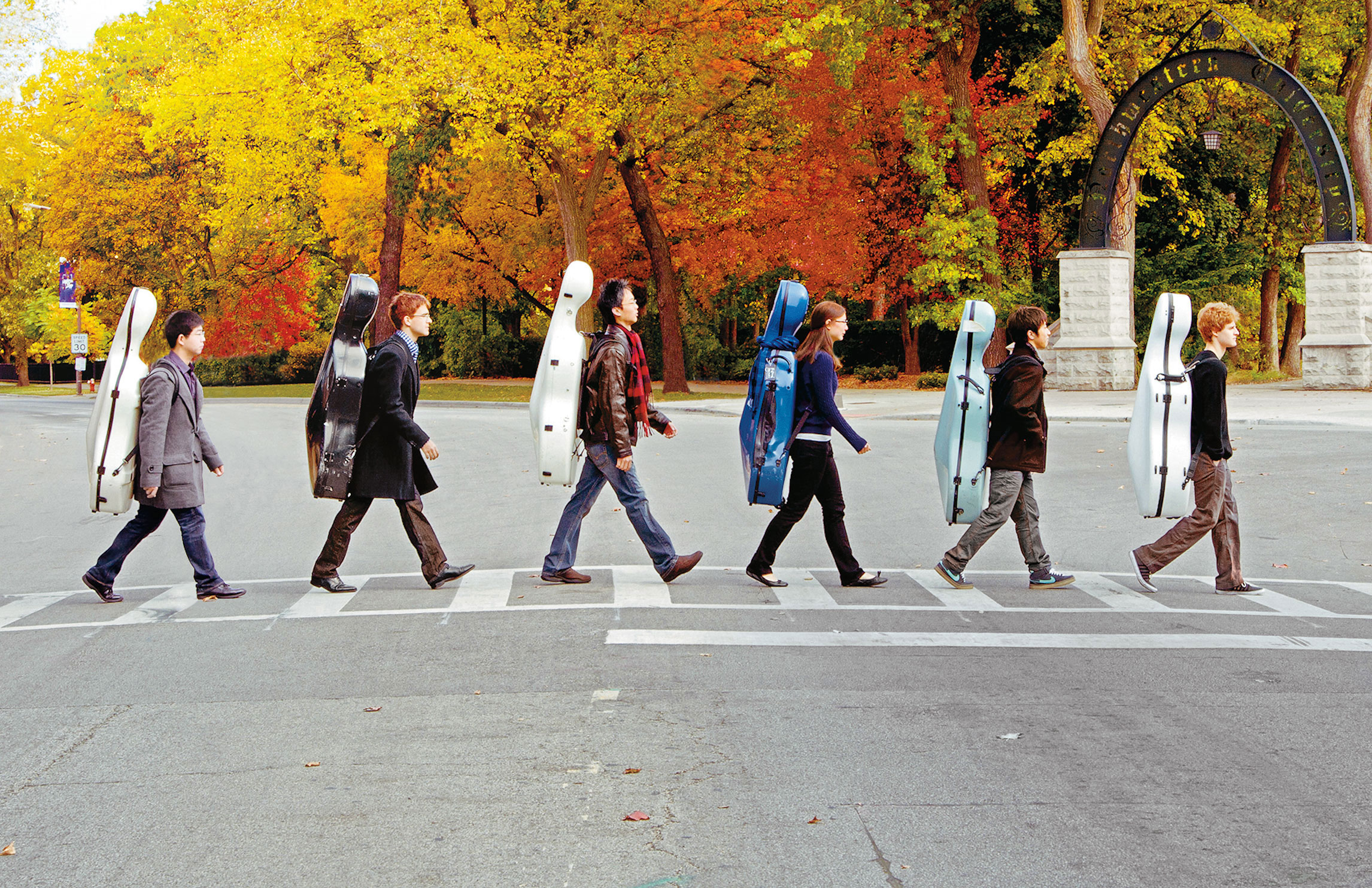We'd Like to Hear from You
Northwestern welcomes signed letters of 250 words or less from readers. We reserve the right to edit all letters. Please send correspondence to the
Editor
Northwestern
1800 Sheridan Road
Evanston, IL 60208-1800
Fax: 847-491-3040
E-mail: letters@northwestern.edu
Find Us on Social Media
Julia Louis-Dreyfus Looks Too Good
 The fall issue cover with actress Julia Louis-Dreyfus [“On the Wild Side”] immediately caught my 12-year-old daughter’s eye. “The photo is Photoshopped,” she announced with the confidence of a teenager.
The fall issue cover with actress Julia Louis-Dreyfus [“On the Wild Side”] immediately caught my 12-year-old daughter’s eye. “The photo is Photoshopped,” she announced with the confidence of a teenager.
My daughter then educated me how to tell: the actress’ clothing was too clingy for reality, and the waist and hips and belt seemed unnaturally narrow. And we noted her perfect complexion for a 50-plus-year-old woman. We also examined other photos of her inside the magazine that seemed to have the same treatment.
I noted the photos were credited to a publicity house. So it’s not surprising that they were Photoshopped.
There has been much discussion about pressure on young girls and women to attain unnatural body shapes, pressure buttressed by the media and Hollywood. While one expects such airbrushed images on the cover of Vogue, People magazine and the Hollywood Reporter, one hopes that an institution like Northwestern would not airbrush reality in regard to women.
Alan Hirsch ’77 MMGT
Davis, Calif.
Editor’s note: The cover photo was a stock image taken by Larsen & Talbert, a photo studio that specializes in celebrity photography. We ran this photo and the other Louis-Dreyfus images just as we received them. We did not Photoshop these images. We do not know if that had been done previously.
As anyone lucky enough to have attended the Mee-Ow Show or the Practical Theatre Company can attest, Julia Louis-Dreyfus was a standout in both ensembles. But among the other multitalented cast members she shared the stage with was John Goodrich ’82, who not only wrote and performed with both companies but also drew the great caricatures on the “Golden Jubilee” poster you reprinted on page 24.
Robert Leighton ’82
New York City
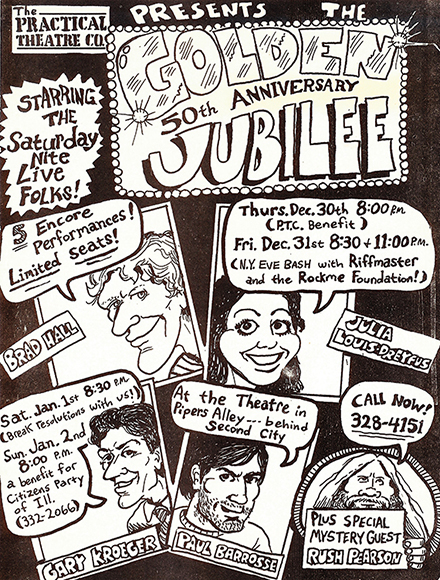
I am sad that you chose Julia Louis-Dreyfus as cover girl for your fall issue. She did not graduate but dropped out and then received an honorary degree. I did graduate! You could have run my photo on the cover.
Langley Lublin Deaver Danowitz ’64
New York City
Striking NUMB Photos
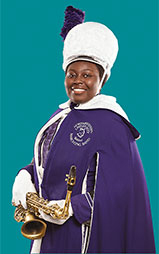 I just saw the photo essay “Strike Up the Band” [fall 2014]. One of the band uniforms being modeled is from my years in the Wildcat band in the 1970s. I was measured for a brand-new uniform my freshman year, and seeing it again in the photo spread brought tears to my eyes.
I just saw the photo essay “Strike Up the Band” [fall 2014]. One of the band uniforms being modeled is from my years in the Wildcat band in the 1970s. I was measured for a brand-new uniform my freshman year, and seeing it again in the photo spread brought tears to my eyes.
I was a “bonehead” in the Northwestern University Wildcat Marching Band for all four years of college, and those are my fondest Northwestern memories. Back in those days the marching band was all male until my junior year.
Everything is there in the photo just as we wore our uniforms except for the white spats that we wore over our shoes. Having current students as the models was a great touch too. Thank you for the memories.
Vincent McCoy ’75, ’03 CERT
Evanston
John Evans and the Sand Creek Massacre
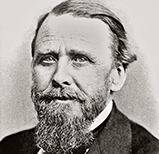 The Sand Creek Massacre of Cheyenne and Arapaho people [“John Evans and the Sand Creek Massacre,” Campus Life, fall 2014] is infamous among the horrific atrocities in U.S. history. May the efforts that have been made to bring out the story of John Evans and the early history of Northwestern be the start of a larger, important process of validating our University’s motto, ever before us: Quaecumque sunt vera, whatsoever things are true.
The Sand Creek Massacre of Cheyenne and Arapaho people [“John Evans and the Sand Creek Massacre,” Campus Life, fall 2014] is infamous among the horrific atrocities in U.S. history. May the efforts that have been made to bring out the story of John Evans and the early history of Northwestern be the start of a larger, important process of validating our University’s motto, ever before us: Quaecumque sunt vera, whatsoever things are true.
John Dotson ’72
Carmel-by-the-Sea, Calif.
As an anthropology doctoral graduate who has worked with tribes and tribal organizations throughout my career, I was pleased to see the article on the Sand Creek Massacre. I hope this is the beginning, and not the end, of a process for Northwestern. Here are 10 additional steps the University could take:
1. The leadership of Northwestern should arrange to attend the tribal council meetings and meet with the leadership of the Northern Cheyenne Tribe in Montana, the Arapaho Tribe of the Wind River Reservation in Wyoming and the Cheyenne and Arapaho tribes in Oklahoma, present the report to them and listen to their thoughts about it.
2. Northwestern should issue a formal written and verbal apology to the three Cheyenne and Arapaho tribes for any pain and suffering the University may have caused, directly or indirectly, from its association with Gov. Evans.
3. Northwestern should offer tuition waivers for any qualified individuals whose parents or grandparents are members of the three Cheyenne and Arapaho tribes.
4. Northwestern could build a relationship with the Cheyenne and Arapaho Tribal College in Oklahoma, including such things as an exchange of faculty, accepting transfer students and joint research projects.
5. Northwestern could talk with the three tribes about ways they can support them, such as through summer programs for tribal youth and Northwestern student volunteers.
6. Northwestern could appoint a liaison to assure there is ongoing communication between the University and the three tribes to build a positive relationship.
7. Northwestern could assure that all undergraduates have access to a course that covers the history of U.S. policy toward Native Americans and invite Cheyenne and Arapaho to participate and/or designate someone to participate in the teaching of the course.
8. Northwestern could establish an annual lecture on current Indian issues, drawing presenters from the tribes and national Indian organizations, such as the National Congress of American Indians and the Native American Rights Fund.
9. Northwestern could consider some of the very accomplished artists and intellectuals of Cheyenne and Arapaho descent for honorary doctorates, such as filmmaker Chris Eyre or political activist Suzan Shown Harjo or lawyer W. Richard West Jr., who was the founding director of the National Museum of the American Indian.
10. Northwestern could establish a Native American advisory committee that meets regularly with University leaders to review programs and issues that may affect American Indian and Alaska Native people and to assist with the implementation of the ideas listed above.
I think these types of activities will not only promote healing for those who are suffering from historical and intergenerational trauma but they will also strengthen the University and the educational experience of its students.
Mim Dixon ’72 MA, ’74 PhD
Albuquerque, N.M.
I daresay I’m not the only one who was upset and disgusted at the feeble attempt of that yearlong research committee to discredit the honorable man John Evans, who founded not only Northwestern but also the University of Denver.
What was the purpose, after all these years, to judge Evans by today’s standards? Never judge a person of one era by the standards of another is a historical given.
John Evans was a staunch Methodist and could never have founded both universities as Methodist institutions if he had not profited from coming West, leaving the relative comforts of the somewhat settled Midwest for the risks and rigors of the frontiers.
Did any of the committee realize how huge Colorado Territory was in those days? It encompassed what is now five to seven states. He couldn’t pick up the phone, text or even write a letter with the assurance it would reach the intended person. Give the man a break!
Would the committee have done any better given the circumstances of the times?
All that time and money the committee spent to cast flimsy aspersions on John Evans, who founded the University where they are now so comfortably employed, teaching revisionist history! For shame!
Patricia Matusek Kenning ’51
Littleton, Colo.
Regarding John Evans and the Sand Creek Massacre, his contributions and moral failures — you should know that the massacre is not forgotten by the descendants of the Northern Arapaho to this day.
The boundaries of Wyoming’s Wind River Reservation are very near to my home. Within the last 15 years I viewed Eugene Ridgely Sr.’s 1994 elk hide painting — a memorial depicting that tragedy — while visiting his home.
Mr. Ridgely Sr. was a Northern Arapaho, a descendant of Little Raven, grandson of Game Man, a survivor of Sand Creek.
Research this well-known pictographic work and ask yourself where our duties on moral obligation, dignity, life and humanity lie today.
Joan Lee Johnson Graf ’51
Riverton, Wyo.
I heard of the Sand Creek Massacre at a genocide conference in Winnipeg, Manitoba, in a presentation by a Yale Native American historian.
On Nov. 29, 1864, U.S. Army volunteers murdered a peaceful camp of American Indians, mostly women, children and the elderly. Chief Black Kettle held up white and American flags. Women begged for mercy on their knees, only to be murdered and mutilated.
This is genocide, and John Evans was responsible even if he personally did not take part. Under international genocide courts, leaders are culpable even if they personally took no part in the killing.
According to former Colorado state historian David Halaas, Evans squandered his position by manufacturing a war that simply did not exist. The scandal forced Evans to resign as territorial governor.
But what should be done? First, the United Methodists have confronted the issue better than Northwestern and have met with the descendants of the victims. One such descendant, Henrietta Mann, a University of Montana professor emeritus, spoke at a recent Methodist conference in Colorado. She should be invited to campus to speak, and a conference on the massacre should be organized.
Furthermore, the name “John Evans” should be removed from all buildings on campus. This is a shocking event and a black eye for our great school.
While it is laudable that Northwestern has at least faced the embarrassment of its founder committing genocide, there were still several omissions in the report and no suggestions for future programs.
Jack Porter ’69 MA, ’71 PhD
Newtonville, Mass.
Editor’s note: Read the entire “Report of the John Evans Study Committee.”
Diversity Means Inclusion of LGBT Students
As someone who speaks to veterinary students and clinicians about diversity and inclusion, I was excited to read what President Morton Schapiro had to say in his letter to alumni [“Transformation Underway,” page 4, fall 2014]. Unfortunately, President Schapiro followed the pathway of many of his colleagues across the nation and spoke only to the issue of color when describing underrepresented populations.
Thankfully, Sean Hargadon expanded on these populations in his article “Bullied” [fall 2014] in the same issue when he wrote about the LGBT community and Northwestern’s Impact LGBT Health and Development Program.
I have found that many of our U.S. college leaders will respond that the LGBT community is not a federally recognized minority, and, therefore, they don’t track this community. However, a recent veterinary college–published paper demonstrated that if asked to volunteer information on sexual orientation, students and faculty will respond so that tracking can be accomplished in an effort to foster a more diverse student-faculty population.
I only hope that President Schapiro will expand his focus to the much broader picture of diversity that includes physical disabilities, ethnicity, culture and sexual orientation. Expansion such as I propose will, as our president states, “benefit not just the University but society in general.”
Malcolm A. Kram ’70
Philadelphia
Fabulous Fall Issue
It is rare that I feel moved to send feedback to any publication, but I cannot resist telling you how absolutely wonderful the fall 2014 issue of Northwestern is. Over the years since my graduation from Medill, I have skimmed the University’s mailings, primarily to learn news of former classmates. However, your fall issue inspired me to read and to write and say, “Fabulous!”
In particular, I admire the graphics — the wonderful photo of the cello players, the full-page color photos, the layouts in general. This is a magazine that can compete with any for-profit publication. Good for you and your staff — you make me proud!
Carol Beachler Wagner ’57, ’82 P
Phoenix
Your fall 2014 issue is one of your best ever, maybe the best. I enjoyed the in-depth story on Julia Louis-Dreyfus ["On the Wild Side"]: complete but ... friendly. Then, a lot of your smaller articles are educational as well as interesting.
I love the way you guys do Passings — by honoring our alumni with great respect as they move on to the next life.
With that, I was sorry to see we lost Ed Nemeth [Passings, page 78], the football player who threw the key block for Ed Tunnicliff’s 43-yard run for the winning touchdown in the 1949 Rose Bowl. Those were some very tough boys, almost all of them back from World War II and combat, as his bio indicated.
Dan Peterson ’58
Milan, Italy
Not So Fond Memories of Chuck Heston
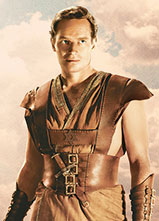 After reading the glowing tribute to Chuck Heston [“Charlton Heston: A Forever Stamp,” Close-Up, page 70, fall 2014], who truly was a Hollywood legend, I thought you would find it interesting to hear from someone who knew him when.
After reading the glowing tribute to Chuck Heston [“Charlton Heston: A Forever Stamp,” Close-Up, page 70, fall 2014], who truly was a Hollywood legend, I thought you would find it interesting to hear from someone who knew him when.
Chuck lived in Wilmette two blocks from my house. We both attended New Trier High School and later Northwestern. Chuck did not play the usual games of the neighborhood. While we played pickup softball or touch football, he was off to fencing lessons and such.
Chuck was a regular guy, but this all changed as he became a successful actor. We were all cut to the quick, even his best friend. After Heston left Northwestern, the first time I saw him back at school, I got no recognition, nor did anyone else. He had some grease paint near his ears and walked like a VIP, which he wasn’t yet. I could tolerate his movies — they were laughers. But when he became president of the NRA, he lost any respect I had left.
As to Chuck’s acting ability, I agree with one critic who said all Chuck’s acting ability could be summed up as a grimace.
Mark A. Young ’50
Hendersonville, N.C.
Cello Road
The “Cello Road” [fall 2014] photo spread on the inside cover of your latest issue was nothing less than stunning.The Arch wasn’t there when I was on campus back in the ’80s, but it’s become such a visual symbol of the University since then.
The fall colors in the background are lovely, and the students crossing the street, while paying tribute to the Beatles’ Abbey Road album cover, are a perfect mix of the old and the new. It’s the timelessness of the University we all remember, interpreted by those who are fortunate enough to inhabit it at this moment in time. Thanks very much for sharing it.
Robert Lincoln Harris ’90
Chicago
Stop and Smell the Roses
Northwestern magazine is always fun to read from cover to cover. But a special thank you for Barbara Mahany’s Purple Prose essay, “Stop, Look and Listen” [fall 2014].
I will continue trying to live as though everything we say and do matters, for it does. But how nice to find one’s own spiritual philosophy supported by another person.
Sally Evers Birmingham ’64
Malvern, Pa.
How to Speak Northwestern
I can’t speak to the etymology of the term “Medildo” [“How to Speak Northwestern,” Campus Life, page 13, fall 2014], but I can discuss usage. In my day the term was used and continues to be used by my classmates to identify anyone who attended Medill. It was not pejorative. I was proud then to be called a Medildo and remain so today.
Jeffrey Adler ’75
Signal Hill, Calif.
Disappointment in Class Designations
Please restore the undergraduate degree designations to the Class Notes section. I find it frustrating that only the graduate school degree designations are included. Are our undergraduate degrees not as important? I’m confused by the rationale that the omission was to be consistent with other schools. What does it matter how other schools print their class designations? To read my fellow alumni degree designations was respectful, nostalgic or, at the very least, interesting.Please bring them back!
Ian Weinberger ’09
New York City
I have to say that I agree with the numerous letter-writers who were unhappy with your decision to eliminate school designations from alumni notes and to not include a degree unless the individual has obtained a graduate degree. My husband and I both graduated from the School of Speech (now the School of Communication) as radio/TV/film majors and are extremely proud of our association with Northwestern.
When reading about the recent accomplishments of our long-ago classmates in your magazine, it helps to jog our memories when we can associate a face in a photograph with a particular school or department.
I also agree with the other writers in their disappointment that, by this policy shift, our hard-earned undergraduate degrees are deemed inconsequential. Four years of undergraduate work now count for less than two to three years for a master’s degree, in your estimation.
I also have a question, since we are on the topic of designations: What does the "P" indicate?
In the fall 2014 cover article, you quote “Paul Barrosse ’80, ’13 P” on his early days in Mee-Ow with Julia Louis-Dreyfus (shows which I remember well, since I was at Northwestern at the time). Yet in “Classmates Decoded,” I find no “P” designation elucidated. To what does the “P” refer?
Thank you very much. I hope that you will seriously reconsider returning pertinent information to listings of the recent accomplishments of Northwestern alumni. My mother-in-law, who graduated from the School of Education and Social Policy, stopped donating after her name was left out of the alumni magazine’s birth announcements for one of her grandchildren, even though the fact was included by the family. This new issue only adds insult to injury.
Gayle Share-Raab '82
Newtown, Pa.
Editor’s note: “P” stands for parent of a current student or alumnus and “GP” stands for grandparent of a current student or alumnus.
I would like to add my name to the list of disappointed alumni. Class designations in your magazine's Class Notes section help us to identify classmates that may be otherwise difficult to remember.
Are only alumni with graduate degrees afforded this convenience? You have done this “to simplify how alumni class years are displayed.” We are actually quite an intelligent bunch and don't need this simplification. Must Northwestern magazine do this “to be consistent with how most universities and colleges show class designations”? How is that relevant to our enjoyment of the magazine?
Dominick Testa ’80
St. Charles, Ill.
I heartily agree with the letters in the fall 2014 protesting your new policy of “decoding” alumni listings. It is bad enough that the names of the schools have been changed (I will always be “J”), but to leave the undergraduate alumni a faceless collection of numbers — while you give special notations to parents and grandparents! — is absurd.
I can only surmise that the change is another attempt at fundraising. I have also been disappointed, after having supplied obituary information to you in the past about two Medill personalities — photography pioneer Garfield Lillard and advertising genius Lewis Cady — that all they were given were mentions in the listings. Go figure.
Georgianne Ensign Kent ’61
Kent, Conn.
Count me among those who are distressed that the alumni news no longer contains school designations. I graduated from Medill years ago and I need help making sure the people I read about and think I know are actually the people I have known. Added to that is the fact that women (at least in that era) all changed their name to their husband’s last name upon marriage, so even more help is needed in making sure these people are actually … well, you know where I'm going with this. Please do restore the added identification.
They taught us fledgling reporters and editors at Medill to make absolutely sure we got name identifications correct and complete, and that’s still good advice.
Dot Sattes Ridings '61
Louisville
I am reading, with dismay, the numerous letters in the recent issue of the Northwestern magazine complaining about this and the response from Northwestern (who, it doesn’t say) that basically says tough luck.
The “Editor’s note” in the magazine was quite poor. It should have read, “We didn’t realize the importance of this designation to our many graduates. We will be reinstating the alumni school designations.”
I’ve been an alumni donor for numerous years, but this year I will hold back any donations until this decision is reversed.
Please pass this email to somebody who can fix this.
Mike Barnes ‘74
Victor, N.Y.
Creepy Oddities
I read with interest the article “Creepy Oddities Shed Light on Death Traditions” [Campus Life, page 11, fall 2014]. Two song titles jumped out at me, those being “The Grave of My Mother” and “She Died on Her Wedding Day.” My father’s uncle was married in the early part of the 20th century and went on his honeymoon with his bride in a touring car, as was popular then. His bride of only a few days was killed in an auto accident when a drunk driver ran into their car. Of course this happened long before I was born, but the tragedy was recounted many times during my childhood, and I have never forgotten it. Though not on her wedding day, death came to her very soon afterward. “The Grave of My Mother” also reminded me, not that I needed reminding, that my mother, a lifelong resident of Illinois, was born on Lincoln’s birthday in 1918, and she died on Mother’s Day in 2007. The irony of those dates has haunted me ever since.
Robert E. Koch ’69
Urbana, Ill.
You Say Potato …
In 1956 during my undergraduate days at Northwestern, a debate took place in the Daily Northwestern about how to spell the name of those purple and white things that cheerleaders wave around. It was determined that they are “pompons.” But on the bottom of page 14 ["Getting to Know NU," Campus Life, fall 2014] someone has spelled them “pompoms.” I see from the Internet that other Big Ten schools have retained the traditional spelling. That leaves “pompom” for the flower and the cannon.
Dean Bekken, ’61, ’64 MS
Tucson
Editor’s note: AP Style, which the magazine follows, uses the term “pompom.”
The Write Way
My 8th grader wrote (and published) a book over the summer. She’s 13 and isn’t comfortable with all the attention she’s been getting, and I’ve even jokingly started to call her “Northwestern.” So today, I open up Northwestern’s website to check out requirements and came across your article [“The Write Way,” spring 2014]. Fantastic!
She’s currently reading the Divergent series by Veronica Roth. I think that sealed it for her; she’ll definitely be on a campus tour in a few years.
She’s young, but it’s never too soon to start thinking about college. I just wanted to let you know I enjoyed your article.
Laurie Hoeksema
Chicago
Remembering the Sandwichman
Thank you so much for sharing the article and link to the vintage film on the Sandwichman [“Late-Night Snacks Delivered,” Then, page 2, spring 2013]. He truly was a Northwestern institution and a lifesaver for us students who needed sustenance for those all-night study sessions. Hearing that whistle meant “the cavalry is on the way!” This really brought back a lot of good memories.
Joyce Kilgore ’76
Washington, D.C.
All Night Long with The Iliad
I was very pleased to read about the marathon reading, aloud and in English, of Homer’s The Iliad by students and faculty on the night of May 23 on the lakefront [“The Iliad by Moonlight,” Campus Life, page 9, fall 2014]. Congratulations to Francesca Tataranni, the Latin program director; to the participants, for their initiative and all-night courage; and to the Alumnae of Northwestern University for partially funding the reading.
I would like to let readers know that I sent a letter to the editor of the most respected newspaper in Greece, Kathimerini, about this wonderful initiative by our Northwestern community. The letter was published and highlighted inside a special frame. Readers responded with excellent comments through letters to the editor and even phone calls to me — all supporting and praising the event. They appreciated that this reading took place at a university outside Greece and that it paid tribute to Hellenic culture and "Homer, the blind poet, who taught us to look at our human condition with new eyes," to paraphrase Ms. Tataranni.
One famous cardiologist-surgeon made specific reference to Northwestern as an excellent university that emphasizes a classical education by hosting such an event. He also mentioned that this is proven in the Northwestern University seal, in which a citation from the Gospel of St. John (1:14) is written in Greek and a phrase from St. Paul’s letter to the Philippians (4:8) in Latin.
Antony Rousseas '72, '73 MS
Athens, Greece
Missing Organ Mention a Sour Note
It was good to read the story “Heart & Soul” [winter 2013] about Alice Millar Chapel. Noticeably missing from that article, however, was any mention of the magnificent Aeolian-Skinner organ in the loft, or of the fact that the Bienen School of Music once included a distinguished program in organ performance.
In a later issue of the magazine some readers wrote in to call attention to the organ [Mailbox, spring 2014], but still no one mentioned the program in organ performance. Graduates of this program (I am married to one — Ann Eutsler ’73 MMus) include well-known recitalists, college and university teachers and many organists who faithfully serve churches and other places of worship. Northwestern’s organ department has contributed greatly to the enrichment of many lives and many communities.
It’s as though a code of silence had been imposed on the subject — by the administration, perhaps? The ending of the program was much lamented in the musical world. It would behoove Northwestern to be honest about this chapter in the chapel’s and the University’s history.
William A. Coulter
Lynchburg, Va.



 Facebook
Facebook Twitter
Twitter Email
Email


